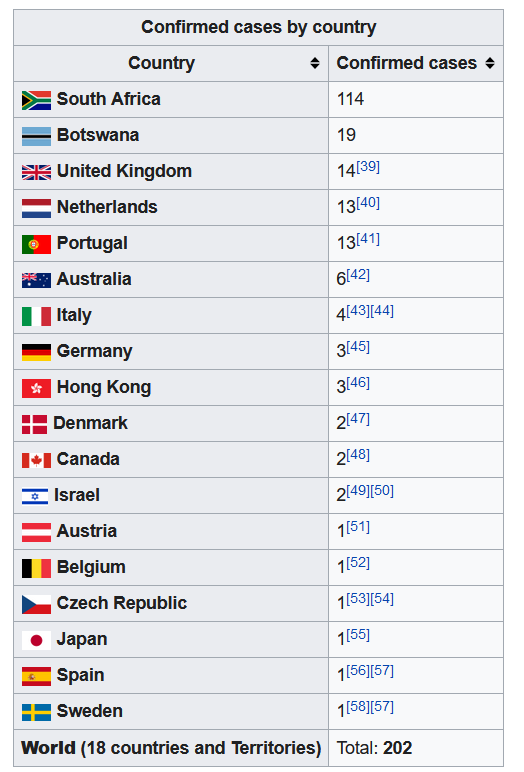
Infections in South Africa had risen sharply in recent weeks, corresponding with the discovery of the omicron variety. There are several mutations in this variation, some of which are problematic. In comparison to other variations of concern, preliminary data shows that this variant has a higher risk of contamination. The variation has been given the Greek name Omicron and has been classified as one of concern, the most dangerous classification.
Where and when did the new variant appear?
On Tuesday, South African scientists discovered a limited number of B.1.1.529 variants in samples obtained from November 14 to November 16. Scientists in South Africa sequenced additional genomes, alerted the government, and requested that the World Health Organization (WHO) assemble its technical working group on viral evolution. The government has found roughly 100 cases of the variation, the most of which are in Gauteng, the country’s most populous province, which includes Johannesburg and Pretoria.
Where is it being circulated?
Botswana, a neighboring nation, claimed it had discovered four cases, all of which involved foreigners who had arrived on a diplomatic mission and had since departed. There is one case in Hong Kong, involving a visitor from South Africa. A migrant returning from Malawi in South Africa to Israel has also tested positive. Belgium has discovered the first case in Europe.

Important things to know about Omicron:
The B.1.1.529 variant has a total of 50 mutations, with more than 30 in the spike protein alone. Most existing COVID-19 vaccines are designed to target the spike protein, which the virus utilizes to gain entry to human cells. Researchers are unsure whether this makes it more transmissible or deadly than prior variants.
The variant also has ten mutations in the receptor binding domain, compared to two in the Delta variant. The Delta Plus that mutated from the latter has the K417N mutation on the spike protein, which has been linked to immune escape, although it is unknown if this is one of the mutations in B.1.1.529.
The World Health Organization has advised care in dealing with this variety in its early stages; additional study is needed to understand how B.1.1.529 behaves.
No distinctive symptoms have yet been linked to the mutation, and some people are asymptomatic, like with other variants.
The WHO is concerned that the significant number of mutations could impair protection in persons who have already been infected as well as those who have been vaccinated. However, the omicron form may be less successful than previous types in this aspect. As of late November 2021, the effects of the alterations, if any, are unknown. The WHO warns that health-care systems may become overburdened, particularly in countries with low immunization rates, where death and morbidity rates are expected to be significantly higher, and advises all countries to enhance COVID vaccines.

